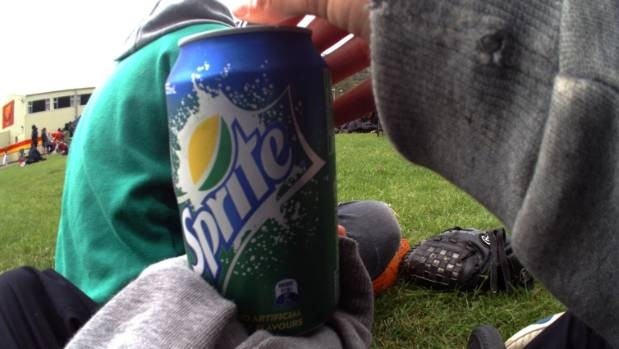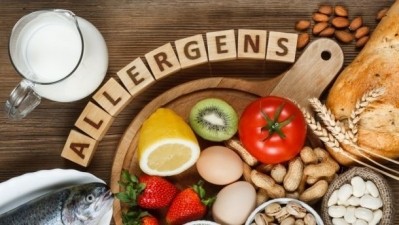Soapbox
Soundbite science doesn't help children learn about good food

But this week an academic paper published in the Journal of Behavioural Nutrition & Physical Activity creates the impression that schools, the home, and even the local supermarket, are not safe places for a child. Why? Because they are apparently “exposed” to 27.3 images of “non-core” foods a day, with the food packaging "marketing" potentially seen in supermarkets "too extensive" to capture.
A bit about the study. Hailed as a world-first, the authors strapped cameras onto 168 New Zealand schoolchildren and captured images of their surroundings. According to one of the authors, the pictures collected are evidence that “these junk food ads are littering children’s lives”.
I thought the claims were unusual (and serious ones if proven accurate), so I checked how the authors had been defining marketing and advertising to children.
I was surprised that they'd chosen the broadest of definitions for marketing which includes food wrappers—packages, bags, boxes—which, not surprisingly, ended up being the majority of non-everyday foods captured by the cameras.
Let’s remember the function of food wrappers. The number one purpose of food packaging is to provide a safe product, making sure it reaches people fit for consumption. Packaging also provides vital safety information to consumers, such as allergen labelling, and additional mandatory nutrition labelling.
Packaged foods in NZ are already tightly regulated to ensure consumers are provided with plenty of ingredient and nutrition information to make informed choices. The 12 year-olds in the study will most likely not be interested in this information, but their parents might, and it’s still an important function of the wrapper.
The authors have also used one of the strictest nutrient profiling schemes, published by the European office of the WHO, to determine their good and bad foods, or in this case “core” vs “non-core”. It’s a scheme mostly quoted as an aspirational goal and only a small number of countries actually use it.
They also categorise any image a child might see as being an advertisement targeting the child, even if the campaign is clearly one for an adult audience, or not appealing to a child in any way. The fact that the child has been in an ad’s vicinity, even if they haven’t seen it, is enough.
It's a classic case of making definitions so broad that they capture everything around a child, whether they are looking or not, and creating a methodology so strict that even foods many parents would think were suitable to serve for breakfast or in lunchboxes, is deemed "non-core".
When a number of the authors have been part of active and public campaigns for sugar taxes, plain-packaging for food products, and treating any advertising a child might see as targeting children, was there really any surprise the paper reached the conclusions it did? Once again sugar taxes and plain-packs were part of solutions discussed.
But back to the data, which I'd argue does not back their calls for further regulation.
According to it, over half the "exposures" were in the home or at school. These are food environments either controlled by families or other professionals.
Of all the so-defined examples of marketing, the paper said: "Food packaging was the predominant marketing medium (74% core foods and 64% non-core foods)".
So in the strongly-worded press release when the author was saying: “Children in the study were exposed to unhealthy food ads in multiple places via multiple media—including an average of seven unhealthy food ads at school and eight in public places," what was not explained was that for many of these children a significant proportion of this "marketing" occurred when they opened their lunchboxes at school or perhaps biscuit tins or cupboards at home.
Among the food photo “crimes”, provided to the media as evidence, were actually healthier versions of snacks, such as Peckish Rice Crackers. I suspect the parent who put that in their child’s lunch that day thought she/he was doing the right thing.
And if the aim was to capture all images, it is somewhat bizarre that the number of "exposures" to food packages in a supermarket or convenience store was deemed "too extensive"—so much so that the images weren't even coded into the final data. Because supermarkets contain shelf after shelf of food packaged in some way, a child’s camera was potentially capturing so many product images that it was overwhelming for the coders.
Were the authors implying that supermarkets were unsafe marketing environments for children? When much was made of a single photo of Sprite in the hand of a child (also supplied by the authors for the media story), making the arbitrary decision to leave out an entire aisle of carbonated drinks in a supermarket because it was deemed too much to monitor, does add a degree of silliness to the final conclusions. An unusual decision with the methodology, indeed.
Common sense would suggest that even a single visit to a supermarket by a child, potentially capturing images of 12,000 food products’ packaging, would have skewed the data considerably to make the whole paper a nonsense. Most would conclude that treating the “exposure” to products on a shelf, as the child walked around a store with an adult, as a normal part of life, not something that should be further regulated.
The paper's release was used (once again) to call for an array of government regulations affecting the food industry, or new food taxes, but the sound bites didn't match up with the real message from the data, which was that in terms of the traditional forms of children’s advertising rampant only a generation ago on television in particular, there’s not much to be found now.
Just 0.6% of what the children saw was marketing of non-core foods. I’m not surprised as food companies who are members of the New Zealand Food & Grocery Council either have “no advertising to children” policies or strictly adhere to advertising rules, which have just been tightened up once again.
The thousands of photos captured by the necklace cameras confirm what all of us know: that some foods are healthier than others, and that as parents we need to be mindful of our children’s diets and limit treat foods.
Reminding parents and educating children about what a good, balanced and varied diet is about would be a better strategy for progress. Food literacy is one of the most significant skill we can teach our children.
- Katherine Rich is chief executive of the New Zealand Food and Grocery Council.



















